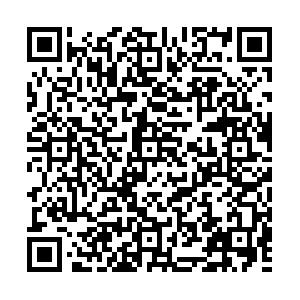|
[1]
|
ITER Physics Basis Editors. Nucl Fusion 1999, 39(12):2137. |
|
[2]
|
ZHANG Z, ZHAO Q, OUYANG X P. J Nucl Radio Chem, 2016, 38(1):19. (in Chinese) (张峥, 赵强, 欧阳晓平. 核化学与放射化学, 2016, 38(1):19.) |
|
[3]
|
BECQUART C S, Domain C. J Nucl Mater, 2009, 385(2):223. |
|
[4]
|
BECQUART C S, DOMAIN C, SARKAR U, et al. J Nucl Mater, 2010, 403(1-3):75. |
|
[5]
|
HOU M, ORTIZ C J, BECQUART C S, et al. J Nucl Mater, 2010, 403(1-3):89. |
|
[6]
|
BECQUART C S, BARTHE M F, DE BACKER A. Phys Scripta, 2011, T145:014048. |
|
[7]
|
WANG W J, KOBAYASHI M, KURATA R, et al. J Nucl Mater, 2011, 417(1-3):555. |
|
[8]
|
DE BACKER A, LHUILLIER P E, BECQUART C S, et al. J Nucl Mater, 2012, 429(1-3):78. |
|
[9]
|
BOISSE J, DOMAIN C, BECQUART C S. J Nucl Mater, 2014, 455(1-3):10. |
|
[10]
|
LU G H, ZHOU H B, BECQUART C S. Nucl Fusion, 2014, 54:086001. |
|
[11]
|
HODILLE E A, BONNIN X, BISSON R, et al. J Nucl Mater, 2015, 467(1):424. |
|
[12]
|
HODILLE E A, FERRO Y, FERNANDEZ N, et al. Phys Scripta, 2016, T167:014011. |
|
[13]
|
DE BACKER A, SAND A, ORTIZ C J, et al. Phys Scripta, 2016, T167:014018. |
|
[14]
|
LIU Y L, ZHOU H B, ZHANG Y, et al. Comp Mater Sci, 2011, 50(11):3213. |
|
[15]
|
YUAN Y, GREUNER H, BöSWIRTH B, et al. J Nucl Mater, 2013, 433(s1-3):523. |
|
[16]
|
HAN T, FAN Z Q, ZHAO S X, et al. J Nucl Mater, 2013, 433(s1-3):351. |
|
[17]
|
YOU Y W, LI D, KONG X S, et al. Nucl Fusion, 2014, 54(10):103007. |
|
[18]
|
HAO T, FAN Z Q, ZHANG T, et al. J Nucl Mater, 2014, 455(1-3):595. |
|
[19]
|
LI C, GREUNER H, ZHAO S X, et al. J Nucl Mater, 2015, 466:357. |
|
[20]
|
WANG S, KONG X S, WU X, et al. J Nucl Mater, 2015, 459(6):143. |
|
[21]
|
XU H Y, TEMMERMAN G D, LUO G N, et al. J Nucl Mater, 2015, 463:308. |
|
[22]
|
YANG X D, XIE Z M, MIAO S, et al. Fusion Eng Des, 2016, 106:56. |
|
[23]
|
WU X B, KONG X S, YOU Y W, et al. Nucl Fusion, 2013, 53(7):073049. |
|
[24]
|
WU X B, KONG X S, YOU Y W, et al. J Nucl Mater, 2014, 455(s1-3):151. |
|
[25]
|
KONG X S, WU X, YOU Y W, et al. Acta Mater, 2014, 66(2):172. |
|
[26]
|
KONG X S, WU X B, LIU C S, et al. Nucl Fusion, 2016, 56(2):026004. |
|
[27]
|
TYBURSKA-PüSCHEL B, ALIMOV V K. Nucl Fusion, 2013, 53(12):123021. |
|
[28]
|
ZAYACHUK Y, HOEN M H J, ZEIJLMANSV, EMMICHOVEN P A, et al. Nucl Fusion, 2013, 53(1):013013. |
|
[29]
|
ZAYACHUK Y, MANHARD A, HOEN M H J, et al. Nucl Fusion, 2014, 54(12):123013. |
|
[30]
|
LIU Y L, ZHANG Y, LUO G N, et al. J Nucl Mater, 2009, s390-391(3):1032. |
|
[31]
|
ALKHAMEES A, LIU Y L, ZHOU H B, et al. J Nucl Mater, 2009, 393(3):508. |
|
[32]
|
ZHOU H B, LIU Y L, JIN S, et al. Nucl Fusion, 2010, 50(2):275. |
|
[33]
|
DUAN C, LIU Y L, ZHOU H B, et al. J Nucl Mater, 2010, 404(2):109. |
|
[34]
|
JIN S, LIU Y L, ZHOU H B, et al. J Nucl Mater, 2011, 415(1):S709. |
|
[35]
|
ZHOU H B, JIN S, ZHANG Y, et al. Prog Nat Sci Mater, 2011, 21(3):240. |
|
[36]
|
ZHOU H B, OU X, ZHANG Y, et al. J Nucl Mater, 2013, 440(s1-3):338. |
|
[37]
|
ZHOU H B, LI Y H, LU G H. Comp Mater Sci, 2015, 112:487. |
|
[38]
|
QIN S Y, JIN S, SUN L, et al. J Nucl Mater, 2015, 465:135. |
|
[39]
|
WANG J, ZHANG Y, ZHOU H B, et al. J Nucl Mater, 2015, 461:230. |
|
[40]
|
WU X B, YOU Y W, KONG X S, et al. Acta Mater, 2016, 120:315. |
|
[41]
|
LI W Y, ZHANG Y, ZHOU H B, et al. Nucl Instr Meth B, 2011, 269(14):1731. |
|
[42]
|
FENG J, CHEN J C, XIAO B. Mater Rev, 2005, 19(f05):239. (in Chinese) (冯晶, 陈敬超, 肖冰.材料导报, 2005, 19(f05):239.) |
|
[43]
|
HOHENBERG P, KOHN W. Phys Rev, 1964, 136:B864. |
|
[44]
|
KOHN W, SHAM L J. Phys Rev, 1965, 140:A1133. |
|
[45]
|
CLART S J, SEGALL M D, PICKARD C J, et al.Z KristCryst Mater, 2005, 220(5/6):567. |
|
[46]
|
PERDEW J P, YUE W, Phys Rev B, 1986, 22:8800. |
|
[47]
|
PERDEW J P, CHEVARY J, VOSKO S, et al. Phys Rev B, 1992, 46:6671. |
|
[48]
|
PERDEW J P, BURKE K, ERNZERHOF M. Phys Rev Lett, 1996, 77:3865. |
|
[49]
|
ⅡKURA H, TSUNEDA T, YANAI T,HIRAO K. J Chem Phys, 2001, 115:3540. |
|
[50]
|
BECQUART C, DOMAIN C.Nucl Instr Meth B, 2007, 255:23. |
|
[51]
|
SöDERLIND P, ERIKSSON O, WILLS J. Phys Rev B, 1993, 48:5844. |
|
[52]
|
LEE S C, CHOI J H, LEE J G, J Nucl Mater, 2009, 383:244. |

 点击查看大图
点击查看大图




 下载:
下载:
 甘公网安备 62010202000723号
甘公网安备 62010202000723号